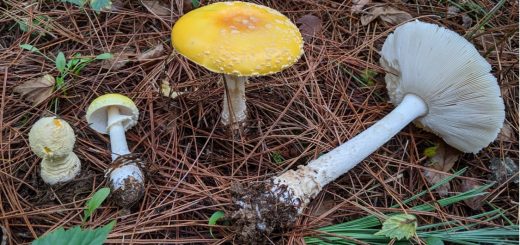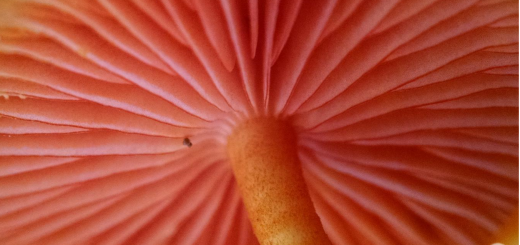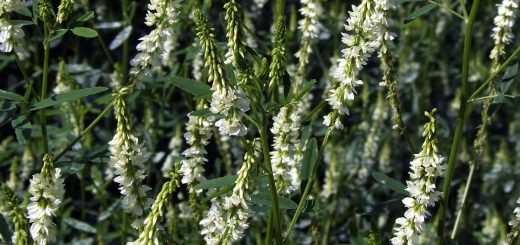#011: Characteristics of Kingdom Fungi [Archived]
Note: This is an archived post. You can read the current version of the post here.
This post begins to answer the age-old question, “What is a fungus?” Fungi are a monophyletic group—meaning that they arose from a single common ancestor—and therefore share a number of traits. Everyone has their own list of important traits common to all fungi, and I have come up with one that agrees with as many as possible.
- Fungi are Eukaryotic. This means they have membrane-bound organelles, as do plants and animals. There are a number of bacteria that exhibit fungal-like growth, but they do not have membrane-bound organelles.
- Fungi are heterotrophic. Unlike most plants, fungi cannot produce their own food. Instead, they rely on organic compounds from the environment for energy. Unlike animals, fungi digest these compounds externally and absorb the products.
- Fungi have cell walls composed of chitin (bugs, spiders, and other arthropods have chitinous exoskeletons). This separates them from plants and protists, which either have cell walls composed of cellulose or no cell walls. Oomycota (water molds) have cellulose cell walls and myxomycota (slime molds) have no cell walls. Although both used to be classified as fungi and are often still studied by mycologists, they are no longer considered true fungi.
- Fungi reproduce and disperse through spores. Fungi may form sexual and/or asexual spores. Most other spore-forming organisms only form asexual spores and use different mechanisms for sexual reproduction. Bacteria only form spores to survive adverse conditions and not as a mechanism for reproduction.
- Fungi may be filamentous or unicellular. Some fungi can even switch between the two growth modes. For more on this see FFF#003.
- Fungi use a distinct range of molecules in their cells. Trehalose, glycogen, and other compounds are used to store energy instead of starch. Animals tend to use glycogen to store energy, while plants tend to use starch. This is one of the indicators that fungi are more closely related to animals than to plants. Unlike animals, which have cholesterol, most fungi have ergostorol in their cell membranes.
This list of characteristics is very general because, as with every kingdom, there is a lot of diversity within the Fungi. For the next few weeks I will be examining the phyla (remember DKPCOFGS?) of Kingdom Fungi and describing in further detail what a fungus is. Unfortunately, fungal taxonomy is a particularly difficult subject these days. Originally, fungi were classified by morphology. This has led to a myriad of changes in the fungal classification system since the advent of the genomics era. The fungal phyla have certainly felt the effects of these changes. There are currently seven recognized phyla, though that number is bound to change again. Additionally, there are some fungi that have not been classified into phyla. The only two phyla that remain relatively unchanged after the recent reshuffling are ascomycota and basidiomycota (which together contain all mushroom-forming species). If you’re in the habit of double-checking the information I present, you may find some discrepancies over the next few weeks with regard to nomenclature. I will try to use the most recent system, but the older ones have been used for a long time and are thus used more frequently.
See Further:
http://www.davidmoore.org.uk/Assets/Mostly_Mycology/Jon_Dixon/kingdom_fungi.htm
http://www.fungionline.org.uk/1intro/1intro_char.html
http://faculty.uca.edu/march/bio2/Past%20semesters/f04/fungi.pdf









![#011: Characteristics of Kingdom Fungi [Archived]](https://www.fungusfactfriday.com/wp-content/themes/hueman/assets/front/img/thumb-small-empty.png)

61 Responses
[…] Fungi […]
[…] Fungi […]
[…] Fungi […]
[…] Fungi […]
[…] Fungi […]
[…] Fungi […]
[…] Fungi […]
[…] Fungi […]
[…] Fungi […]
[…] Fungi […]
[…] Fungi […]
[…] Fungi […]
[…] Fungi […]
[…] Fungi […]
[…] Fungi […]
[…] Fungi […]
[…] Fungi […]
[…] Fungi […]
[…] Fungi […]
[…] Fungi […]
[…] Fungi […]
[…] Fungi […]
[…] Fungi […]
[…] Fungi […]
[…] Fungi […]
[…] Fungi […]
[…] Fungi […]
[…] Fungi […]
[…] Fungi […]
[…] Fungi […]
[…] Fungi […]
[…] Fungi […]
[…] Fungi […]
[…] Fungi […]
[…] Fungi […]
[…] Fungi […]
[…] Fungi […]
[…] Fungi […]
[…] Fungi […]
[…] Fungi […]
[…] Fungi […]
[…] Fungi […]
[…] Fungi […]
[…] Fungi […]
[…] Fungi […]
[…] Fungi […]
[…] Fungi […]
[…] Fungi […]
[…] Fungi […]
[…] Fungi […]
[…] Fungi […]
[…] Fungi […]
[…] Fungi […]
[…] Fungi […]
[…] Fungi […]
[…] #011: Characteristics of Kingdom Fungi […]
[…] Fungi […]
[…] Fungi […]
[…] Fungi […]
[…] Fungi […]
[…] Fungi […]